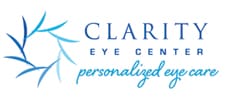Dry eye disease (DED) is a common condition that affects millions of people worldwide. It occurs when your eyes don’t produce enough tears or the quality of your tears is poor, leading to discomfort and vision issues. In this blog, we’ll explore the symptoms, evaluations, and treatment options for managing dry eye disease.
Symptoms of Dry Eye Disease
The symptoms of dry eye disease can vary but often include:
- Burning or stinging sensation in the eyes
- Dryness or a gritty feeling as if there’s something in your eye
- Redness and irritation
- Blurred vision that improves with blinking
- Sensitivity to light (photophobia)
- Eye fatigue, especially after prolonged screen use
Evaluations for Dry Eye Disease
Diagnosing dry eye disease involves a comprehensive eye exam, which may include:
- Patient history: Discussing symptoms and medical history
- Visual acuity test: Checking how well you see at various distances
- Tear production test: Measuring the volume of your tears
- Tear film break-up time (TBUT): Assessing how quickly your tear film evaporates
- Osmolarity test: Measuring the concentration of your tears
- Meibomian gland evaluation: Checking the function of the glands that produce oil for your tears
Treatment Options for Dry Eye Disease
Managing dry eye disease often requires a combination of treatments, including:
- Artificial tears: Over-the-counter eye drops that lubricate the eyes
- Prescription medications: Anti-inflammatory eye drops or medications to increase tear production
- Lifestyle changes: Taking breaks from screen time, using a humidifier, and wearing protective eyewear
- Procedures: Intense pulsed light (IPL) therapy, punctal plugs to block tear drainage, or meibomian gland expression
- Surgical options: In severe cases, surgical interventions may be considered
Conclusion
Dry eye disease can significantly impact your quality of life, but with proper diagnosis and management, you can find relief. If you’re experiencing symptoms of dry eye disease, it’s important to consult with an eye care professional to determine the best course of action for your specific needs.


